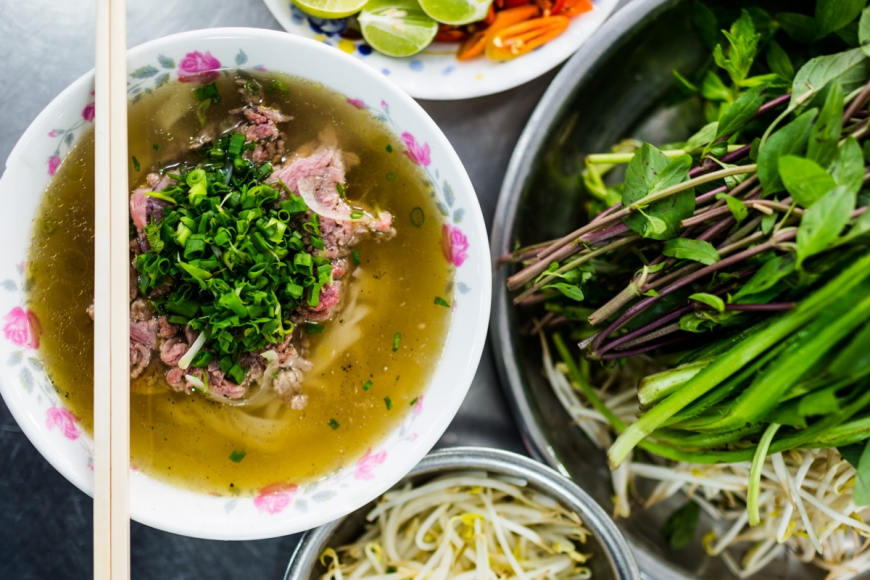
Vietnam’s Traditional Cuisine
Rice, fish sauce, snacks, and regional diversity characterize Vietnamese cuisine.
If you live in a multicultural city like Toronto, Los Angeles, London, or Paris, you are probably familiar with Vietnamese cuisine. The country has one of the world's most diverse, delicious, and healthy cuisines. Rice and its derivatives, fish sauce, and vegetables are the main ingredients in Vietnamese cuisine.
Vietnam is endowed with a plethora of plant species due to its tropical climate, long coastline, and massive mountain range. The number of fruits and vegetables produced and consumed daily in the country will astound you.
A trip to a Vietnamese restaurant in another country will almost certainly light a fire under you: you will almost certainly be served a plate of fresh herbs before anything else.
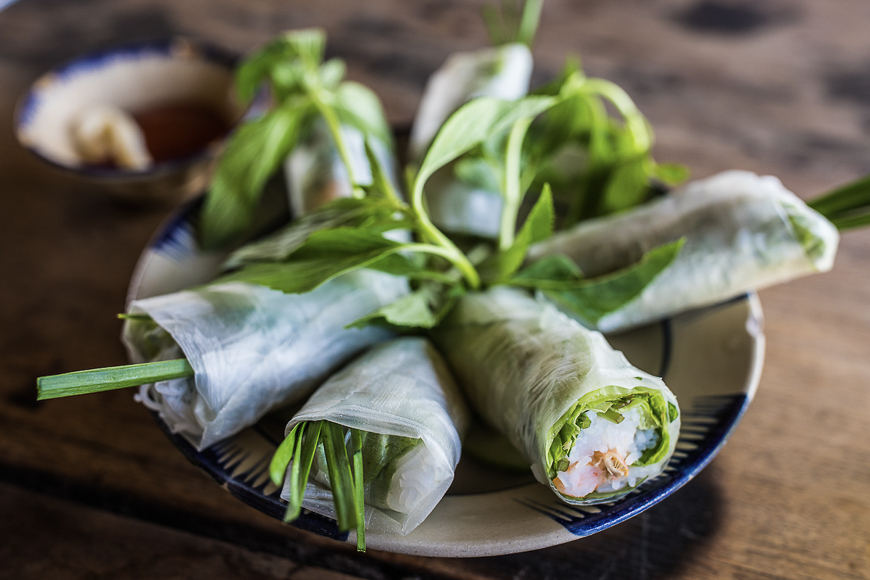 A common rice-based culture
A common rice-based culture
Vietnamese people sometimes wonder how Westerners can eat bread for days on end, but the opposite is also true. Most visitors to Vietnam are astounded by the abundance of rice and rice-related dishes.
Rice Production
Rice remains the most important component of agriculture and the food scene.
Rice is a sacred object in many Vietnamese temples. It is said to have originated from Mother Godness Worshipping, Vietnam's most enduring belief. Yes, rice is a big deal here. The image of many rice plants and a square symbolizing a paddy field were the first written characters that made up the word "Happiness" in ancient Vietnamese. Rice is not only a source of joy, but it also shapes Vietnamese culture.
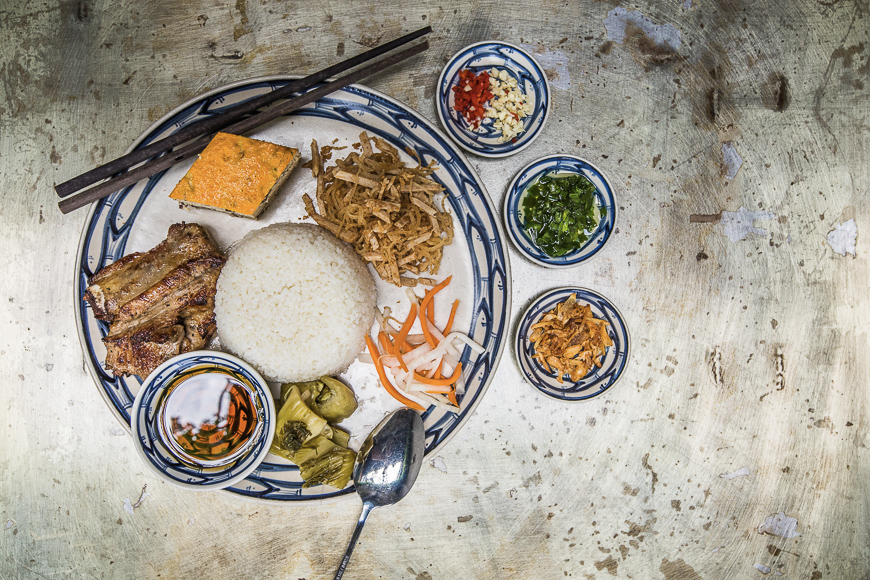 As a result, many main dishes and snacks in Vietnam are made from rice, including boiled rice in daily meals, rice porridge, steamed rice, glutinous rice cake, the well-known Banh Chung (square cake), and an endless number of rice-based dishes from every region in Vietnam.
As a result, many main dishes and snacks in Vietnam are made from rice, including boiled rice in daily meals, rice porridge, steamed rice, glutinous rice cake, the well-known Banh Chung (square cake), and an endless number of rice-based dishes from every region in Vietnam.
Even the ubiquitous Pho that you've probably heard of is made from rice. Rice is the center of everything, just as the sun is at the center of the entire solar system.
Because rice is so important to the Vietnamese, they are constantly developing new farming methods and rice varieties. Many Vietnam rice varieties are renowned for their distinct flavor, but only when visiting Vietnam and eating boiled rice with soya sauce and pickled eggplants is your trip to Vietnam considered complete.
Vietnamese Rice
For all lunches and dinners, a bowl of rice is a must.
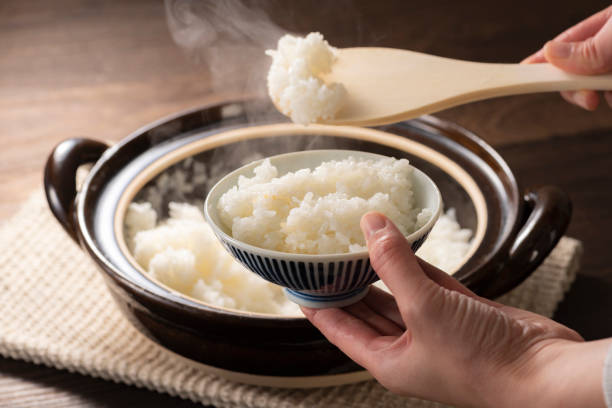 If you believe that the way people eat shapes their society, you must be excited to learn about the fish sauce in every Vietnamese meal. You frequently finish your meal portion in silence, without dipping your fork into others'? There are no transparent meal portions among Vietnam family members in a meal, and they must consider how much they should eat carefully because all of the food is placed on a tray.
If you believe that the way people eat shapes their society, you must be excited to learn about the fish sauce in every Vietnamese meal. You frequently finish your meal portion in silence, without dipping your fork into others'? There are no transparent meal portions among Vietnam family members in a meal, and they must consider how much they should eat carefully because all of the food is placed on a tray.
The renowned fish sauce bowl, which is used by all eaters and is supposed to form Vietnamese characteristics, is placed in the center of the tray. Some say the common fish sauce bowl represents Vietnamese solidarity, while others say it is the source of many bad personalities such as jealousy and embezzlement.
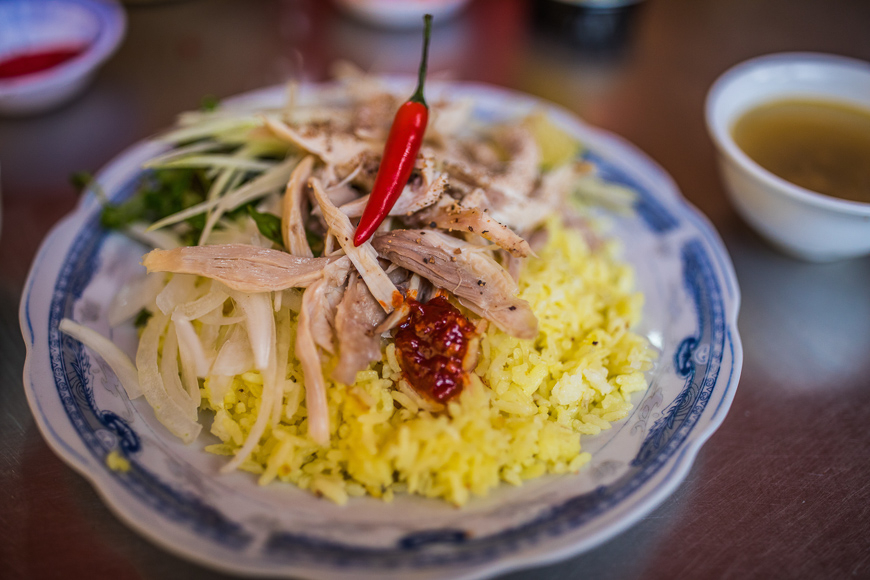 Whatever it is, one thing is certain: fish sauce is an important cultural feature in Vietnamese cuisine. Vietnam is known as a wet rice farming country, with little animal breeding and a population that subsists primarily on vegetables and aquatic creatures such as shrimp, fish, and snails. As a result, the most popular dishes are boiled, and fish sauce is in high demand.
Whatever it is, one thing is certain: fish sauce is an important cultural feature in Vietnamese cuisine. Vietnam is known as a wet rice farming country, with little animal breeding and a population that subsists primarily on vegetables and aquatic creatures such as shrimp, fish, and snails. As a result, the most popular dishes are boiled, and fish sauce is in high demand.
Vietnamese now have a hundred different sauces, each used for a different dish, region, and season.
Snack paradise to explore
Peasants in Vietnam used to have a lot of free time after the busy crop season was over, and preparing some nosh to eat was a natural result of the situation. Sweet potato is an excellent example of this. It is the most popular snack in the countryside. Have you ever stayed in a Vietnamese home? You should know that boiled sweet potato, cassava, and peanuts are the most typical Vietnamese snacks - naturally without salt or sugar.
Vietnam Snacks are frequently available in non-packaged form with no added sugar or salt.
 There are certainly bizarre things to try if you dare to venture beyond the standard ones. The best place to try authentic Vietnamese snacks is in a family or on the sidewalks along every street. Tasting a fertilized egg at 4 p.m. on a breezy afternoon may frighten you, but it is one of the most popular snacks here and is highly nutritious.
There are certainly bizarre things to try if you dare to venture beyond the standard ones. The best place to try authentic Vietnamese snacks is in a family or on the sidewalks along every street. Tasting a fertilized egg at 4 p.m. on a breezy afternoon may frighten you, but it is one of the most popular snacks here and is highly nutritious.
Aside from wonderful noodles, rice cakes, and bean sweet soups, you might be too shy to eat a bowl of pig raw blood soups. Is it based on Totem beliefs? When eating the dish, few Vietnamese question it. All they want to do is pick the right restaurant and wait for the raw blood soups with Vietnamese spirit to be served.
Unity and diversity
If there is one thing to say about Vietnamese food, it has to be "unpredictable diversity." Each region, North, Central, and South, can be proud of something. The influence of Chinese and French culture during colonial times adds to the vibrant gastronomic scenes. Because Vietnam has more than one food capital, it is difficult to describe and compare the specific features of each region's cuisine. While Hanoi offers some authentic and unique food experiences, Hue is proud of its royal heritage, and Ho Chi Minh City is proud to be the most inclusive place for dining. You must discover it for yourself and decide which one you prefer!
Herbs and sprouts
Breakfast in Vietnam varies from noodles to rice to baguette, as opposed to the toast-butter-jam-cereal culture. Pho is a well-known and popular dish, but you can broaden your culinary horizons by trying banh cuon, xoi xeo, chao suon... People eat rice with vegetable broth and some type of the second dish for lunch and dinner. Tofu, chicken, pork, beef, and potatoes are among them! This is where regional differences come into play, with different types of processing and spice added to food.
